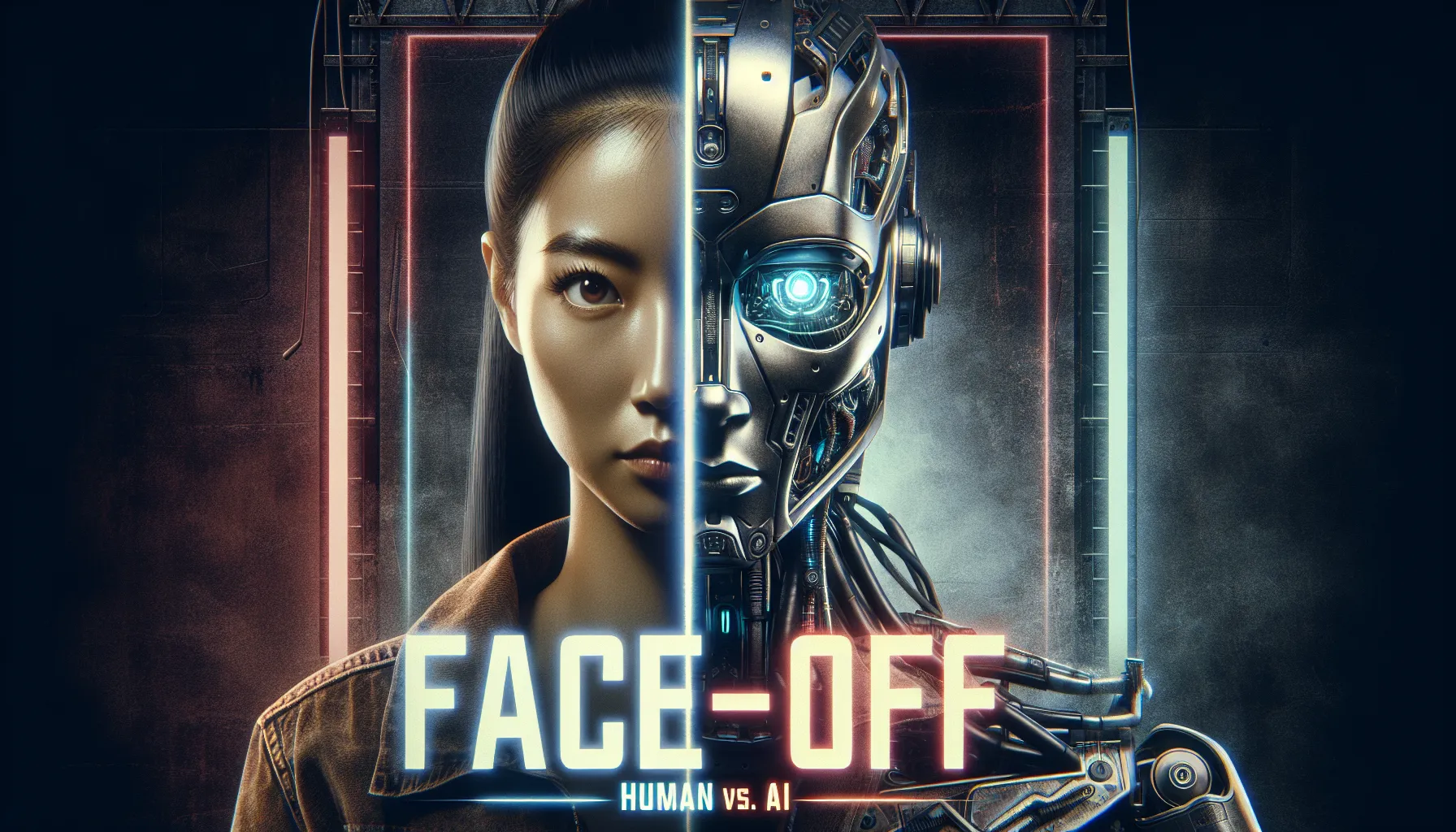
In the digital age, artificial intelligence (AI) has revolutionized content creation. From writing essays to generating marketing copy, AI tools have made it easier than ever to produce large volumes of text quickly.
But with this rise in AI-generated content comes the challenge of distinguishing between human-written and AI-written articles. Why is this important? Because knowing the difference can help maintain trust, credibility, and the integrity of the information we consume.
Understanding AI-Generated Content
So, what exactly is AI-written content? AI-generated articles are created using sophisticated algorithms and machine learning models. These tools, such as OpenAI's GPT-4, can generate human-like text based on prompts and inputs. They analyze vast amounts of data to mimic writing styles and produce coherent sentences.
Common AI writing tools include:
- OpenAI's GPT-4
- Google's BERT
- Chhaya AI
- Jasper (formerly Jarvis)
- Writesonic
These tools have varying capabilities, from simple text generation to advanced content creation that can include intricate storytelling and complex data analysis.
Why It's Important to Detect AI-Written Articles
Detecting AI-written articles isn't just a matter of curiosity; it has significant ethical and practical implications. Here are a few reasons why it's crucial:
- Ethical Implications: Transparency is key in content creation. Readers have a right to know whether they're consuming human-written or AI-generated content.
- Impact on Trust and Credibility: Human writers bring unique perspectives, experiences, and emotional depth to their work. AI-written articles might lack these qualities, potentially undermining trust and credibility.
- Potential for Misinformation: AI tools can produce misleading or false information if not properly monitored. Detecting AI content helps mitigate the risk of spreading misinformation.
Key Characteristics of AI-Written Articles
AI-written articles often exhibit certain telltale characteristics:
- Consistency in Style and Tone: AI tends to maintain a uniform writing style and tone throughout the article, which can sometimes feel unnatural.
- Repetitive Phrasing: AI might use the same phrases or structures repeatedly, as it lacks the human ability to naturally vary language.
- Lack of Personal Anecdotes or Unique Experiences: AI can't draw from personal experiences or emotions, resulting in content that may feel impersonal or generic.
- Overuse of Certain Keywords or Phrases: AI tools often optimize for SEO, leading to an unnatural repetition of certain keywords.
Technical Indicators of AI Content
Beyond stylistic clues, technical indicators can also reveal AI-generated content:
- Use of Specific AI-Generated Metadata: Some AI tools leave behind metadata that can be detected using specialized software.
- Analysis of Sentence Structure and Syntax: AI-generated text might follow certain syntactic patterns that differ from human writing.
- Patterns in Word Choice and Frequency: Analyzing the frequency and choice of words can help identify AI-written content, as AI might favor certain terms over others
Behavioral Clues in AI Content
Identifying AI-generated content involves more than just looking for technical markers; there are also behavioral clues that can give away an AI's hand. These clues often manifest in the way the text is structured and the subtle nuances in the writing. Here are some key behavioral clues to watch for:
1. Consistent Tone and Style
AI-generated content often maintains a very consistent tone and style throughout the entire piece. Unlike human writers, who naturally vary their tone and style depending on the subject matter, mood, or audience, AI tends to stick to a uniform approach. This can make the text seem monotonous and lacking in the dynamic range that characterizes human writing.
2. Repetitive Language and Phrases
One of the most noticeable behavioral clues is the repetition of certain words or phrases. AI tools, especially those trained on large datasets, might rely heavily on a limited vocabulary set. As a result, you might find repeated phrases or terminology that make the content feel redundant and less engaging.
3. Overly Formal or Informal Language
AI often struggles to strike the right balance between formal and informal language. Depending on the training data, the text might come off as too stiff and formal or, conversely, overly casual. Human writers typically adjust their language to suit the context and audience, something AI doesn't always manage to do seamlessly.
4. Lack of Deep Insights or Nuances
AI-generated content tends to provide surface-level information without delving deeply into nuances or complex insights. It might regurgitate facts and figures but often fails to offer original analysis, personal opinions, or deep dives into the subject matter. This lack of depth can be a giveaway that the content is AI-generated.
5. Predictable Structure
AI-generated articles often follow a predictable structure, with clear but somewhat rigid paragraph divisions and logical progressions. While this can make the content easy to follow, it can also make it feel mechanical and less engaging. Human writers often mix up their structure to keep readers interested, adding subheadings, bullet points, and varying paragraph lengths.
6. Limited Use of Anecdotes and Personal Stories
Human writers frequently use anecdotes, personal stories, and unique examples to illustrate points and engage readers. AI, however, lacks personal experiences and tends to stick to generalities. The absence of these personal touches can make the content feel impersonal and detached.
7. Emotional Tone and Engagement
AI struggles with conveying emotions convincingly. While it can mimic emotional language to some extent, it often lacks the genuine emotional engagement that human writers bring to their work. The emotional tone in AI-generated content might feel forced or superficial, lacking the authenticity that resonates with readers.
8. Difficulty with Humor and Sarcasm
Humor and sarcasm are challenging for AI to master. These elements rely heavily on context, cultural understanding, and timing—areas where AI is typically weak. If the text includes attempts at humor or sarcasm that fall flat or seem out of place, it's a potential clue that AI-generated the content.
9. Over-Reliance on Clichés and Common Phrases
AI tends to use clichés and common phrases more frequently than human writers. This reliance on familiar language can make the content feel unoriginal and bland. Human writers often strive to use fresh and creative expressions, adding a unique voice to their writing.
10. Inconsistent Use of Pronouns and References
AI might occasionally mix up pronouns or fail to maintain consistent references throughout the text. This can lead to confusing sentences or unclear antecedents, which disrupt the flow of the content. Human writers are generally more adept at maintaining clarity and coherence in their references.
Tools and Techniques to Identify AI Content
AI Detection Software and Tools
Tools like AI Dungeon and others can analyze text for signs of AI generation. Chhaya AI includes a built-in plagiarism checker and AI content detector, allowing users to ensure their work is original and complete all necessary checks in a single platform. These tools can identify patterns and anomalies that are typical of AI-generated text, providing a detailed analysis and highlighting sections that may not be human-written. This makes Chhaya AI a comprehensive solution for both creating and verifying content.
Manual Analysis and Comparison
Manual analysis remains one of the most effective methods for identifying AI-generated content. Here are a few techniques:
-
Comparative Reading: Compare the suspected AI-written article with known human-written content on similar topics. Look for differences in writing style, depth of insight, and personal anecdotes. Human writers often provide unique perspectives and detailed explanations that AI might miss.
-
Spotting Repetitive Patterns: AI-generated text often has repetitive phrases and consistent sentence structures. By carefully reading through the text, you can spot these repetitive patterns, which may indicate AI involvement.
-
Checking for Generic Language: AI-written content may lack the specific details and unique storytelling elements that human writers include. Look for generic statements and a lack of personalized or localized references.
Utilizing Reverse Image Search for AI-generated images
Images in an article can also indicate AI involvement, especially if they are AI-generated. Here’s how to utilize reverse image search:
-
Google Reverse Image Search: Upload the image to Google Images and see where else it appears online. If the image is found on multiple AI-generated content sites, it may be AI-created.
-
Specialized Tools: Use tools like TinEye, which provide detailed information about an image’s origins and where it has been used before. This can help determine if the image is original or generated by an AI.
-
Analyzing Image Quality: AI-generated images sometimes have subtle imperfections or anomalies that are not immediately noticeable. High-resolution images can be scrutinized for inconsistencies in textures, lighting, or other details that might indicate they were created by an AI.
By combining these tools and techniques, you can effectively identify AI-generated content and ensure the authenticity and originality of the articles you read and produce.
Case Studies: Real Examples of AI vs. Human Writing
To truly grasp the nuances that differentiate AI-written articles from those penned by humans, let’s delve into some detailed case studies. These examples will highlight specific elements that are indicative of AI-generated content and provide a clearer understanding of what to look for when trying to distinguish between the two.
Case Study 1: AI-Written Article on Healthy Eating
Example AI-Written Paragraph:
"Healthy eating is essential for maintaining good health. It involves consuming a balanced diet that includes a variety of foods from all food groups. Fruits and vegetables should be a significant part of the diet. Whole grains are also important. Proteins from different sources such as meat, fish, and legumes should be included. It is also necessary to limit the intake of sugars and fats."
Analysis:
- Consistency in Tone and Structure: The paragraph maintains a very consistent tone and structure. Each sentence follows a similar pattern, which can feel monotonous to the reader.
- Lack of Depth and Personal Insight: The content is very factual and generic. There are no personal anecdotes, unique insights, or detailed explanations that would typically come from personal experience or deep knowledge of the subject.
- Repetitive Phrasing: Phrases such as “should be” and “it is also necessary” are repetitive and indicative of the AI’s tendency to stick to a limited set of phrases.
Case Study 2: Human-Written Article on Healthy Eating
Example Human-Written Paragraph:
"Embracing a healthy eating lifestyle has transformed my life in unexpected ways. By incorporating more fruits and vegetables into my meals, I’ve noticed a significant boost in my energy levels and overall mood. For instance, swapping my usual afternoon snack with a handful of mixed nuts or a fresh apple has not only satisfied my hunger but also kept me alert during long work hours. Additionally, experimenting with whole grains like quinoa and barley has added a delightful variety to my diet, making meals more enjoyable and nutritious."
Analysis:
- Personal Anecdotes and Experiences: This paragraph includes personal experiences and anecdotes that add depth and relatability to the content. The author’s specific examples, such as the afternoon snack swap, make the writing engaging and credible.
- Variety in Sentence Structure: The sentences vary in length and complexity, which keeps the reader’s interest and reflects a natural writing flow that is hard for AI to mimic consistently.
- Emotional Engagement: The human-written paragraph connects with the reader on an emotional level by sharing personal benefits and the joy of discovering new foods. This emotional engagement is often missing in AI-generated content.
Case Study 3: AI-Written Article on Climate Change
Example AI-Written Paragraph:
"Climate change is a significant global issue. It is caused by the increase in greenhouse gases in the atmosphere. These gases trap heat and cause the Earth's temperature to rise. This leads to various environmental impacts, such as melting ice caps and rising sea levels. It is important to reduce emissions to mitigate these effects."
Analysis:
-
Generic Content: The paragraph provides basic information without going into detail or providing new insights. It reads like a summary of widely known facts.
-
Limited Vocabulary: The vocabulary is limited, with repeated use of words like “important” and “effects.” This lack of lexical variety is a common sign of AI writing.
-
Straightforward Structure: The structure is very straightforward and lacks the complexity and nuance that would be expected from a human writer discussing such a complex issue.
Case Study 4: Human-Written Article on Climate Change
Example Human-Written Paragraph:
"Experiencing the drastic changes in weather patterns over the past decade has made the issue of climate change feel incredibly personal. Growing up in the Midwest, I remember winters with heavy snowfall and summers that were comfortably warm. Nowadays, it’s not uncommon to see torrential downpours in what should be the dry season or unseasonably warm days in December. These shifts are more than just inconvenient; they’re a clear sign of our planet’s distress. Reducing emissions isn’t just an abstract goal—it’s a critical step we must take to preserve the natural rhythms of our environment."
Analysis:
-
Personal Connection and Observations: The author shares personal observations and memories, creating a strong connection with the reader and adding authenticity to the discussion.
-
Rich Vocabulary and Descriptive Language: The use of descriptive language and varied vocabulary enriches the content, making it more engaging and vivid. Phrases like “torrential downpours” and “unseasonably warm days” add depth.
-
Emotional Appeal and Urgency: The paragraph conveys a sense of urgency and emotional appeal, urging readers to take action. This emotional depth is often missing in AI-generated content.
The Future of AI in Content Creation
The landscape of content creation is evolving rapidly, with AI playing a significant role in shaping its future. Here are some valuable insights into what we can expect:
Advances in AI Writing Technology
-
Improved Natural Language Processing (NLP): Future advancements in NLP will make AI-generated content even more sophisticated and human-like. AI will be able to understand and replicate the subtleties of human language, including idiomatic expressions, cultural references, and emotional nuances.
-
Contextual Understanding: AI tools will enhance their understanding of context, producing more relevant and engaging content. This includes recognizing specific audiences' tones, styles, and preferences, allowing for more personalized and targeted writing.
-
Creative Writing and Storytelling: AI is expected to make significant strides in creative writing, generating compelling narratives, scripts, and even poetry. This will open up new possibilities for AI in entertainment, education, and marketing.
Potential for Human-AI Collaboration
-
Augmenting Human Creativity: Rather than replacing human writers, AI can serve as a powerful tool to augment human creativity. Writers can use AI to generate ideas, overcome writer's block, and enhance storytelling techniques.
-
Efficiency and Productivity: AI can handle repetitive and time-consuming tasks, such as data analysis, research, and content optimization. This allows human writers to focus on more strategic and creative aspects of content creation, boosting overall productivity.
-
Co-Creation Models: We will likely see more co-creation models where AI and humans work together to produce content. For instance, AI might draft an initial version of an article, which a human writer then refines and personalizes.
Ethical Considerations and Guidelines
-
Transparency and Disclosure: As AI-generated content becomes more prevalent, it will be essential to establish guidelines for transparency and disclosure. Readers should be informed when they are consuming AI-written content to maintain trust and credibility.
-
Content Authenticity: Ensuring the authenticity of content will be a critical focus. This includes developing advanced detection tools, like those offered by Chhaya AI, to distinguish between human and AI-written articles and prevent the spread of misinformation.
-
Responsible Use of AI: The ethical use of AI in content creation will involve setting standards and best practices. This includes avoiding biases in AI-generated content, ensuring data privacy, and promoting fair use of AI technologies.
-
Regulation and Policy Development: Governments and industry bodies will need to develop regulations and policies to govern the use of AI in content creation. These regulations will aim to protect consumer interests, promote ethical practices, and foster innovation in a responsible manner.
Educational and Skill Development
-
Training for Writers: As AI tools become integral to content creation, there will be a growing need for training programs to help writers effectively use these technologies. This includes understanding AI capabilities, integrating AI into their workflow, and maintaining their unique voice and style.
-
Developing New Skill Sets: Writers and content creators will need to develop new skill sets to stay competitive. This includes data literacy, technical proficiency in using AI tools like Chhaya AI, and the ability to critically evaluate and enhance AI-generated content.
Conclusion
The future of AI in content creation holds immense potential for innovation, efficiency, and collaboration. By embracing these advancements while adhering to ethical guidelines, we can harness the power of AI to enhance the quality and authenticity of content. As we move forward, the synergy between human creativity and AI technology will redefine the boundaries of what's possible in the realm of content creation.

